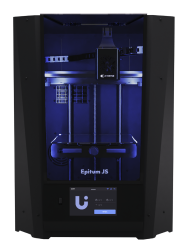
Filament for 3D printing is the plastic material used in additive manufacturing on FFF/FDM 3D printers (Fused Filament Fabrication).
All 3D printer owners face a wide range of filaments, making it challenging to determine the suitable material for specific tasks. At first glance, these materials may seem nearly identical, with color being the most apparent difference.
In reality, the differences between them are significant. Some 3D print plastics are suitable only for decorative items, while others are used to create end-use products capable of handling substantial loads, such as in the aerospace industry.
Materials for 3D printing can vary significantly in their tolerance to temperature extremes. For instance, one material might soften and lose its properties at just 60°C, while another can withstand external temperatures up to 250°C.
Basic Materials for 3D Printing
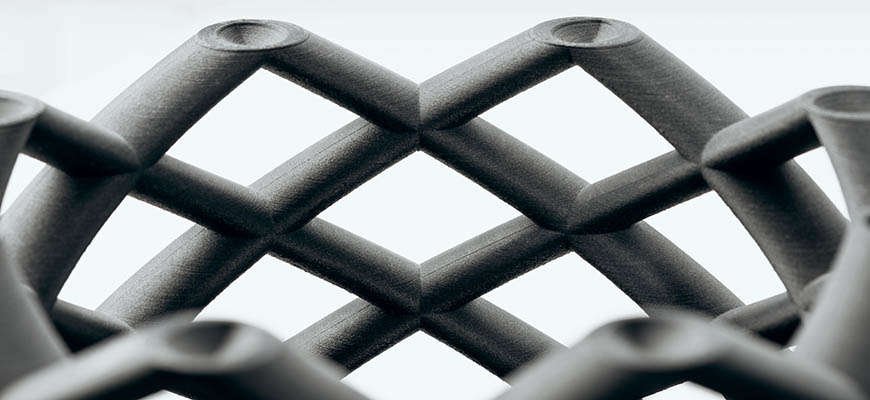
PLA filament is one of the most popular 3D printer materials as it is easy to use and works well, even on affordable 3D printers. For example, you can easily find reliable 3D printer filament suppliers in the UAE, offering both local and international brands.
PLA is also considered a promising material as it can, in some cases, serve as a more environmentally friendly alternative to traditional plastics.
However, its typical heat distortion temperature is around 60°C, which makes it unsuitable for functional prints. It’s also more brittle compared to other filaments and absorbs moisture.
However, PLA doesn’t shrink, which allows for printing thin walls and large models without a heated chamber. The wide range of colors can meet any preference.
It can also undergo post-processing, which is a common practice to enhance its appearance. A popular method is painting, often employed to give 3D-printed objects a polished and visually appealing finish. Learning how to paint 3D-printed plastic can open up numerous creative possibilities, transforming your prints into something more.
As a result, PLA plastic 3D printing is a perfect choice for hobbyists and education, and it is suitable for creating non-functional prototypes and decorative models.
Tip: Avoid using 3D printer filament PLA for functional parts that may be exposed to high temperatures or mechanical loads.
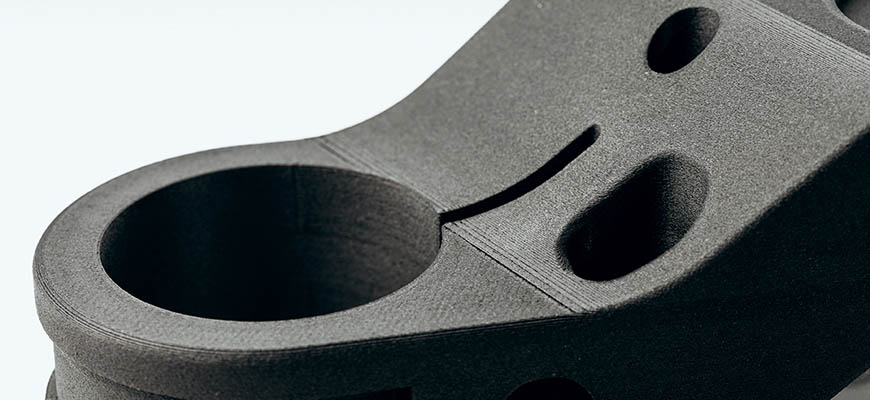
ABS filament is known for its high strength and impact resistance. It can withstand external temperatures up to 100°C, making it suitable for most applications.
This plastic has significant shrinkage during printing, requiring more professional equipment to produce high-quality and large functional parts. Still, parts up to 15-20 cm tall with simple geometry can be easily printed. This 3D printer filament is an excellent choice for prototypes and can be used by engineers for their projects.
Tip: Use a 3D printer with a heated chamber to prevent shrinkage and warping of large models.
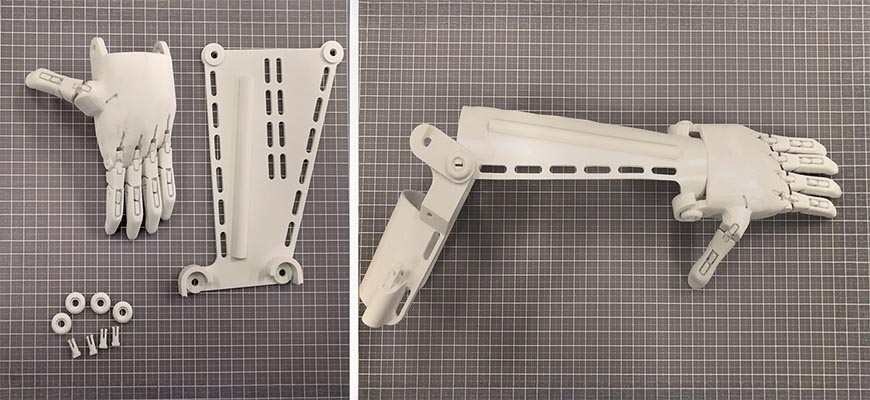
PETG filament is another popular material, often chosen as a middle ground between PLA and ABS, particularly for users of open-frame 3D printers. It combines the convenience and ease of use of PLA with some of the durability and strength characteristics of ABS. For example, PETG can withstand temperatures around 80-85°C. It also has low shrinkage during printing, which allows for the production of larger and more precise models without the need for a heated chamber.
Additionally, PETG offers excellent chemical resistance and moderate UV resistance, making it a good choice for outdoor or industrial applications.
However, while PETG is versatile, ABS is still considered more practical for many functional applications, especially when higher heat resistance or greater impact strength is required. If your 3D printer is equipped to handle ABS (with features like a heated bed and active chamber heating), it might be a better option for demanding projects.
Tip: Avoid using PETG for parts requiring extreme heat resistance or mechanical strength.
Engineering Materials
Here’s where things get interesting: Engineering materials allow printing items with enhanced properties, such as high operating temperatures, chemical resistance, and excellent physical and mechanical characteristics.
In the past, these filaments were exclusively available on industrial 3D printers, which cost hundreds of thousands of dollars and were as large as a room.
Technology has advanced, and 3D printers like the Epitum JL now feature active chamber heating up to 90°C and an all-metal heater, ensuring stable conditions for the filament throughout the print and improving layer bonding, which enhances physical properties.
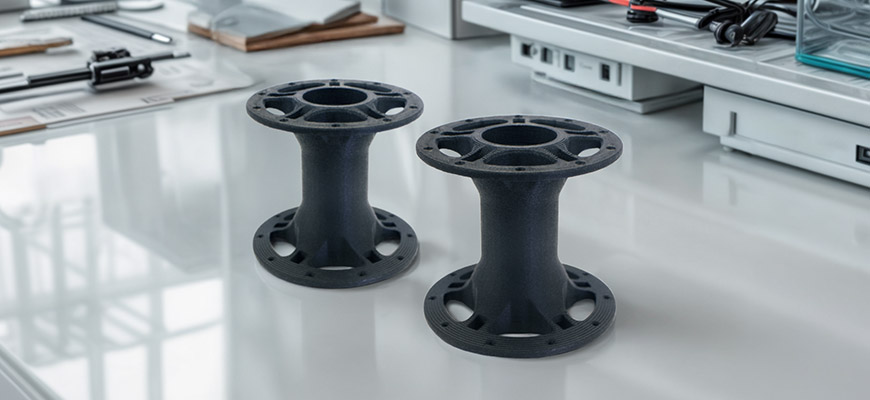
PA (6/12/66) (polyamides) is a high-tech polymer based on amide bonds. Objects made of PA6 and PA66 can withstand maximum external temperatures up to 120-130°C, while PA12 has a moderate maximum operating temperature tolerance of 90-100°C.
This 3D printer filament is known for its high strength and wear resistance. Some polyamides have self-lubricating properties, making them an excellent choice for the production of moving functional parts and gears. Additionally, this plastic has high chemical resistance, making it suitable for automotive and chemical industries.
Tip: Use a 3D printer with active chamber heating and a metal extruder for printing with PA.
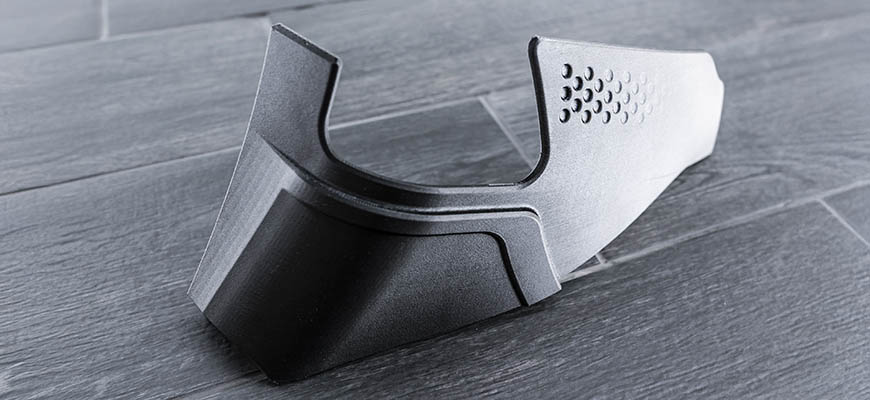
Composite filaments: ABS GF/CF is a plastic reinforced with glass or carbon fibers, acting like rebar in reinforced concrete. This filament is strong, rigid, and impact-resistant.
Depending on the percentage of fiber content, its peak temperature tolerance can reach up to 150°C.
It is used to produce mechanically stressed functional parts in automotive manufacturing and electronics. It is a favorite material among many 3D printing studios and engineers. Thanks to the fibers, it has significantly reduced shrinkage compared to regular ABS and has a pleasant rough texture that hides the layers. A layperson might not even realize that an item made from ABS CF15 (15% carbon fiber content) is 3D printed.
Another advantage is that these materials are easy to post-process. This can be crucial in many cases, as it is important to understand in advance, for example, how to paint 3D-printed plastic or how to sand it. These materials simplify the process.
Tip: To adapt to the printing characteristics, start with a material with a lower fiber content (e.g., 15% carbon fiber).
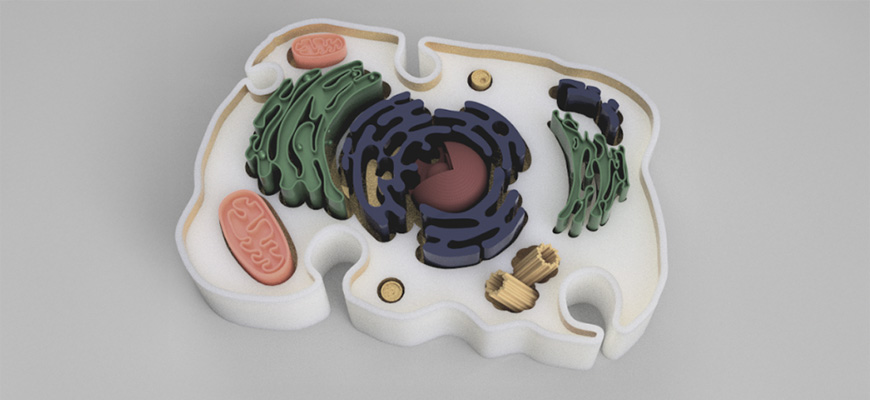
Polycarbonate (PC) is another high-performance plastic offering high strength and rigidity and is resistant to high temperatures. It can also be transparent. Its heat distortion temperature is around 140 °C.
PC is used in electronics, optics, construction, and mechanically stressed parts manufacturing. It demands high specifications from a 3D printer and is nearly impossible to print without active chamber heating.
Tip: Use a 3D printer with active chamber heating to avoid warping.
Epitum Profile Database for 3D Printing Materials - Easy Start
Composite materials are less popular than basic ones, and not every 3D printer owner knows their properties.
Therefore, Epitum engineers pre-test these materials and select the optimal settings for each one. This ensures that professional engineers, doctors, and business owners don't have to spend time adjusting over 20 parameters, which can also vary from manufacturer to manufacturer. You can find over 70 ready-made profiles, even for less common materials, while still being free to choose your own settings if you prefer or have a special task.
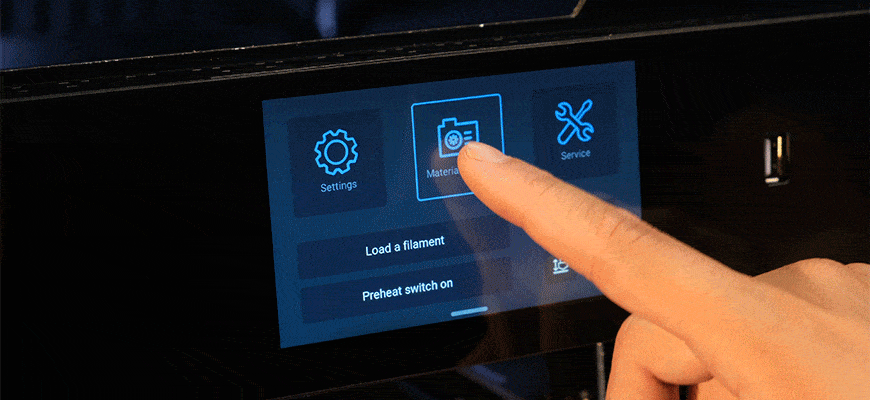
To start working with the profile database, download the archive from the website for free, then import it into your Epitum 3D printer. Next, select the material profile that matches your filament, and you’re all set! You won’t need to adjust any settings on your computer.
Flexible filaments
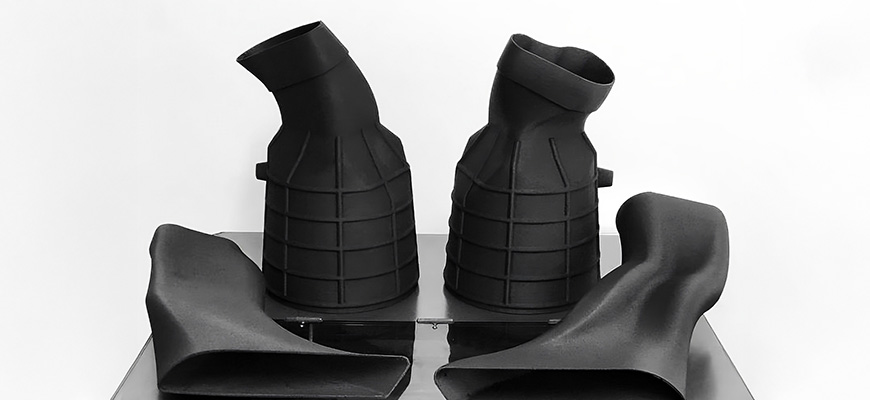
Flexible 3D printing plastics, such as TPU, TPE, rubber, TPEE, and others, are also available. Flexible plastics in 3D printing allow the creation of objects that require flexibility, elasticity, and resistance to mechanical stress. They are less popular but can be very useful in certain situations.
Tip: Reduce the printing speed and use an extruder with a PTFE tube for the best results, which comes with every Epitum 3D printer.
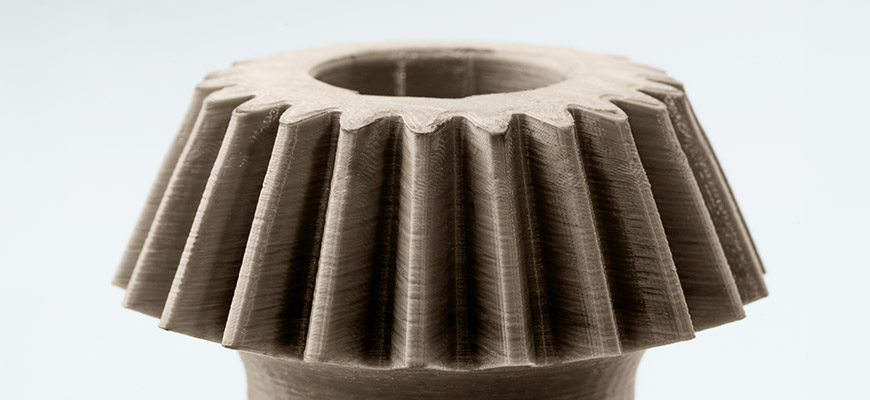
Advanced Materials
PEEK, PEKK, PPSU, and ULTEM are structural 3D printer materials known for high operating temperatures and superior consumer properties.
They are distinguished by their high cost per spool and ability to withstand maximum external temperatures up to 260°C. Materials in this category are highly resistant to many chemicals. PEEK and PEKK offer the highest mechanical strength and chemical resistance, making them ideal for the most demanding applications. These materials are used in the aerospace, automotive, and space industries.
Epitum 3D printers are equipped to print small parts using these materials.
Tip: Use these materials only with 3D printers equipped with a heated chamber and capable of handling high temperatures. Start your experiments with miniature models. Also, note that the 3D printer material cost, in this case, may be surprisingly high. These materials might not fit within the project budget. Often, they can be replaced with cheaper composites.
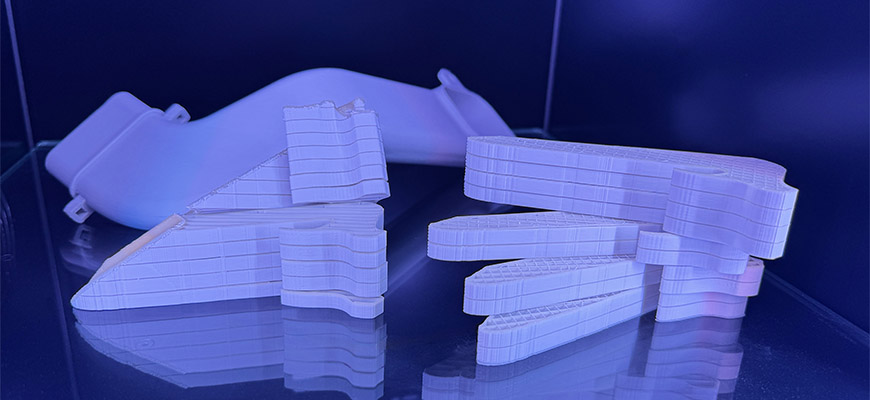
Support Materials
Another category of materials is designed specifically for printing support structures, which are essential for 3D printing objects with complex geometries and overhanging elements (anything angled less than 45 degrees relative to the 3D printer bed).
Typically, supports are printed from the same material as the main object, which makes them difficult to remove.
However, if you have a dual-nozzle 3D printer, you no longer need to spend time on complex support removal. You can use special materials for 3D printing support.
PVA is a material used for printing water-soluble supports, which can be easily removed from water after printing. However, this material is only compatible with PLA and TPU, making it unsuitable for printing functional objects with complex shapes.
Another support material is HIPS, which can be dissolved in limonene, making it an excellent support material for printing with ABS or composites.
Tip: Note that if you want to print support structures from a specific material, you need to specify this during slicing. Ensure material compatibility. For example, PVA is not compatible with ABS.
Epitum J series 3D printers are perfect for working with these materials. The patented JetSmart technology allows nozzle switching in less than a second without the need to build wipe towers to clean the nozzles, as is common with other similar 3D printers. This can reduce printing time by several hours and is also a more eco-friendly solution, as it eliminates waste from building wipe towers.
Additionally, if you don't have access to a large amount of support material or if it is too expensive, the Printoformer slicer allows you to create "optimized support." In this mode, only a thin layer of support material is printed between the primary material and the object.
Guide for Selection
- Determine Project Requirements: Strength, flexibility, thermal resistance, chemical resistance, and aesthetics considerations.
- Check 3D Printer Compatibility: Not all 3D printers support high-temperature or abrasive materials. Epitum 3D printers feature active chamber heating and a maximum extruder temperature of 430 degrees Celsius.
- Experiment: Start with basic materials such as PLA and move to more complex ones as you gain experience.
- Manufacturer: Choosing the right 3D print materials is essential for ensuring the durability and functionality of your printed objects. Prefer high-quality and well-known filament manufacturers, as the quality can vary significantly.





